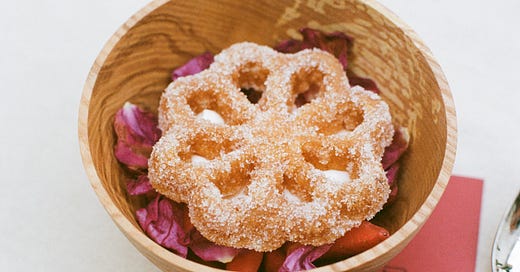Do you have Oatly?
I have a confession… I got my first pair of New Balance a couple of weeks ago. I spent 3 years resisting them. What started life as a dad shoe that nobody under the age of 45 would be seen to wear has transpired into the must-have footwear of 2021. But after 3 years of bad shoe choices and subsequently unbearable foot pain, I was resigned to swallowing my pride and purchasing a pair of shoes that would ultimately make me look like everyone else currently living in our oat-milk-flat-white-drinking-gentrified suburb. Needless to say, 3 weeks in, I can testify that the American manufacturers know what they are doing when it comes to comfort. Now, is that not a sentence your dad would say? So here I am talking about trends again. Sorry, if it's not your thing but trends absolutely fascinate me. I think about why we do things all the time and more importantly, and why we want to look and be the same. Our tribal nature in needing to belong to groups and become followers is hard to ignore. However, I find myself trying to resist trends regularly until eventually swallowing my pride, giving in and resigning to the fact that my house is entirely decked out in semi-affordable Hay homeware. I am still unsure about how that sits. It is these very thoughts that plague my brain, not least when food is involved.
Under influence
Way back when, if chefs were keen to see what the competition was up to, they would visit their restaurants. Today, however, the quest for seeking such inspiration has been simplified. Sure, visiting restaurants remains an excellent if not costly exercise, however, now with chefs posting their work on social media, it's much more accessible to develop new techniques and broaden portfolios. However, when people spend entire sections of their day online, there are ramifications. What transpires, involuntarily or not, is that we all begin to emulate each other. Not only does everything begin to look the same, but social media becomes the primary cultural force and the first source of inspiration for creativity, which only accelerates the cycle of replication. What occurs is a global pattern where industries are influenced not by what they feel, but by what they see…
My first sightings of the croustade was about 5 years ago in the 3 Michelin star restaurant Frantzen in Sweden and 2 Michelin star Jordnaer in Copenhagen. Frantzen used the cup-shaped mould, filling the vessels with luxury delicacies like hand-dived scallop and King crab. Restaurant Jordnaer preferred a star-shaped mould, topping it with the most perfectly circular spoonful of caviar. The mould (or timbale) is an iron with a handle and when heated, dipped in a yeasted batter of flour and egg and fried, it forms a crispy outer layer that pops off and can be filled. It's a strikingly beautiful bite and vehicle for a delicious filling, which makes for an exquisite canapé or elevated snack. It’s also the biggest food trend in Michelin star restaurants of late.




